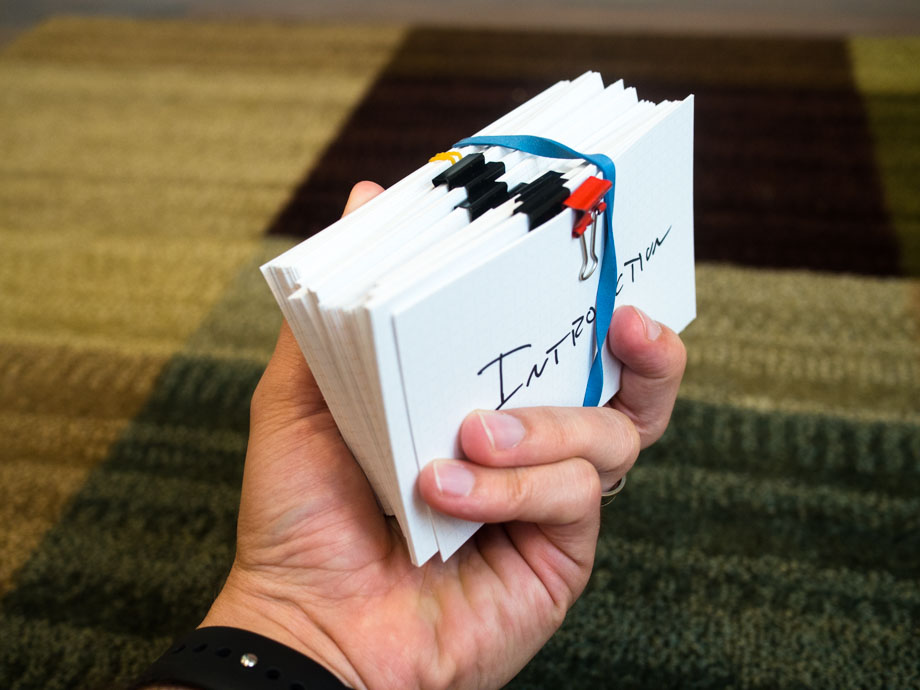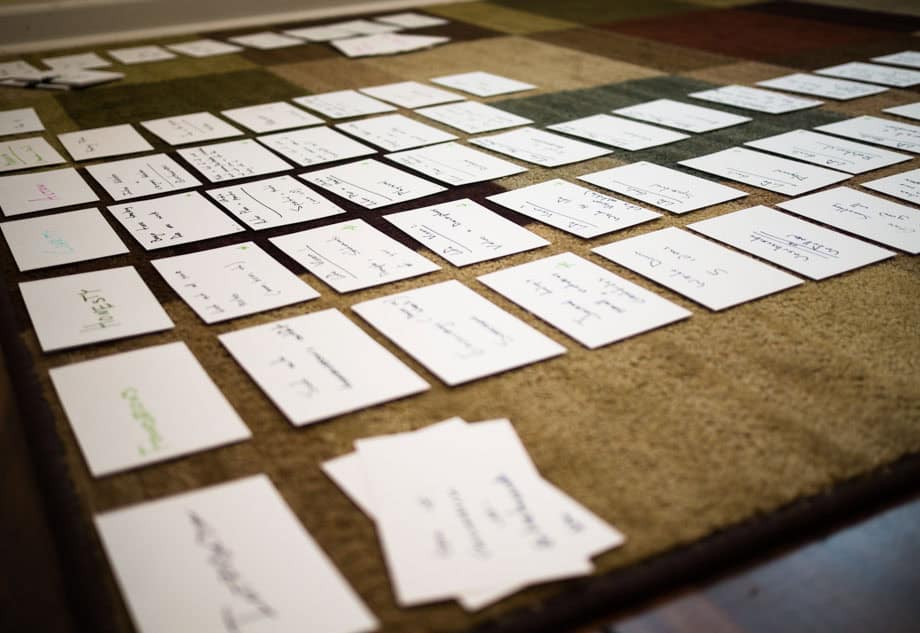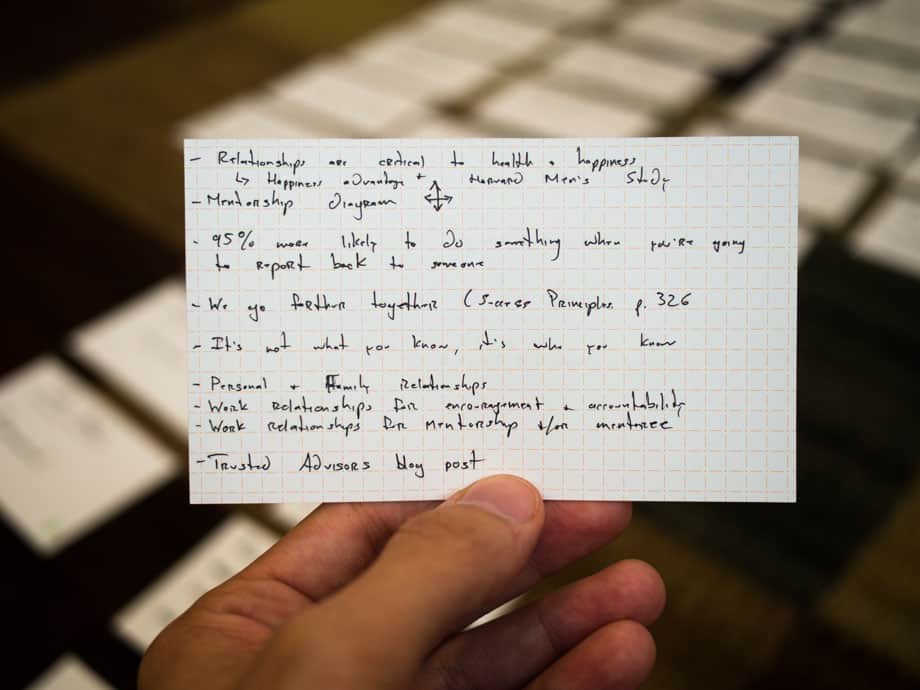
I built the Focus Course on 3×5 notecards.
While there were other tools — such as highlighters, binder clips, the world’s greatest pen, iA Writer, MailChimp, WordPress, a Baron Fig notebook, and a stack of paperback books taller than my 3-year-old — the notecards proved to be instrumental.
The idea to outline and build the Focus Course on notecards came from this awesome video about how Dustin Lance Black creates his movie screenplays:
So, earlier this year, I opened up a fresh pack of 3×5 cards from my pals a Nock and wrote down all the ideas and topics for the course. Putting only one idea, topic, assignment, or lesson per notecard. Then I laid everything out to survey what was there.
Being able to see it all visually like this proved to be immensely helpful. I could quickly move stuff around and get an idea for the overall flow of the course.

I had 7 “rows” of cards: the Introduction, the five modules, and the conclusion. At first I had just shy of 60 days worth of cards in there. But I knew that I had to keep it to 40 (in the end I cheated by not counting the introduction or conclusion day, so technically it’s 42 days).
The challenge of paring the course from 60 days down to 40 wasn’t easy. Some of the cards I just tossed out altogether. Others I ended up combining. When friends would come over, I’d bring them down to my office and show them the outline and ask what they thought.
Finally, once I had the 40 days settled, I went through the order over and over in my head. I wanted Day 1 to lead into Day 2 to lead into Day 3, etc. I wanted all of Module 1 to lead into Module 2. And so on. I wanted there to be an ebb and flow to the lessons, so that the more fun days were interspersed with the more challenging introspective day, etc. And I wanted the course to start with something easy and fun note and to end with something fun but challenging.
In short, the information architecture of the course was just as vital as the contents. And the notecards were instrumental in helping get the architecture just right.

With the order of the course finally finished. I started outlining each lesson. On the front of each card was simply the focus for each day. On the back of the card I could put any notes, ideas, and references for that day, but it had to fit on the card. I didn’t want to have so much content it’d be impossible to get through each day’s lesson in a timely manner, so my outlines were literally constrained by the physical size of a 3×5 notecard.
Then, I put the whole stack of cards in order, placed them next to my desk, and started writing. Each day I took the topmost card and wrote the corresponding lesson for the course.
It took me 47 days to write the course. I began on March 19 and finished on May 5. During that month and a half, I wrote 40 daily lessons, plus the course’s introduction, conclusion, and the 5 module overviews: roughly 55,000 words in total; an average of 1,170 words every single day.1
It was this outlining and writing workflow that got me into the habit of having a pre-defined topic to write about. Writing the Focus Course in 47 days may sound like a huge task, but actually it was pretty easy.
For one, because I was so deeply immersed in the topics and content, everything was top of mind. Secondly, the rhythm and routine of writing every day got pretty easy after the first couple weeks.
Lastly, the constraints of the notecards themselves — a single topic with a pre-defined outline — took away much of the ambiguity involved in the writing process. All I had left to do was expound on the ideas I had already written down.
* * *
This workflow could be used for so many other things: A book, a weekly email newsletter, a month-long series of blog posts, etc.
If you’re struggling to write daily, consider giving it a try. Pick a subject, write down a handful of singular ideas, give yourself a constraint about how in-depth (or not) you’ll go on each idea, and then give yourself a timeline for when you’ll write about and publish each of those.
- In a future post I’ll be sharing about the how and why I had a group of 90 pilot members to go through the course ahead of time and help me finalize the contents and flow. These amazing folks proved to be so valuable and helpful. ↵